Music Production Knowledge Backlog
Here you can find my latest published content. Use the Search!
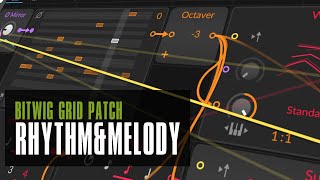
Oct 03, 2023 Tutorial
In this video, I demonstrate how to create a quick generative patch using Bitwig. Starting with a simple setup, I gradually make it more complex over time, showing easy steps for everyone to follow. By utilizing modules like the polygrid and counter, you can create unique melodies and rhythms, and further modulate them to add variation and interest to your patches.
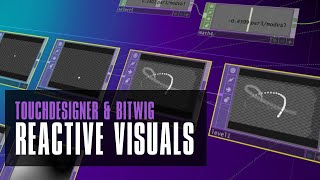
Sep 29, 2023 Tutorial
In yesterday's video, I showed how to connect TouchDesigner and Bitwig Studio using TD Bitwig, but many viewers were more interested in creating visuals in Bitwig. So in today's video, I demonstrate how to create generative visuals in TouchDesigner and synchronize them with music in Bitwig using TD Bitwig. I explain the steps to create a noise texture, mix layers, map audio envelopes to visuals, and use macros and remotes to modulate parameters for an interactive and visually appealing experience.
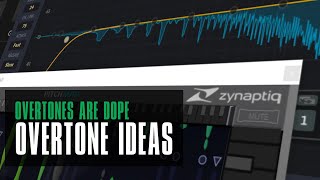
Sep 26, 2023 Tutorial
In this video, I explore interesting sound ideas by using various techniques. I start with a simple sine oscillator setup and then incorporate feedback and phase modulation to create inharmonic overtones. I demonstrate how tools like pitch mapping, filtering, and sampling can be used creatively to manipulate and design unique sounds.
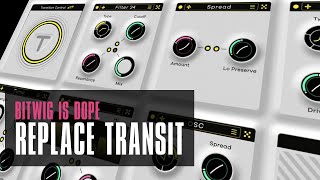
Sep 22, 2023 Tutorial
In this video, I discuss the topic of using the transit plugin in Bitwig Studio and whether it is worth it. While some may find the presets of the plugin useful, I personally find that I can easily replicate the effects and transitions using Bitwig Studio's modulation capabilities. I explain how to create similar effects within Bitwig Studio, showcasing the flexibility and potential of the software.
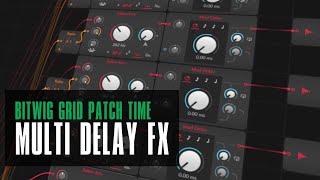
Sep 18, 2023 Tutorial
In today's video, I show how to create a multi-band delay effect using the polymer synthesizer as input. I demonstrate how to use the FXgrid, filters, and a mod delay to create the effect. I also implement macros for resonance, feedback, and filter cutoff. To make changing the delay timings easier, I use a step mode interface. I explain the logic behind it and how to map it to each delay. I discuss the limitations of the grid for creating interface controls and the need for better interfaces. I give examples of how the effect sounds and suggest adding a convolution reverb. I also mention the possibility of using pitch quantization and panning for more control. Overall, it's a creative way to achieve a multi-band delay effect with a flexible interface.
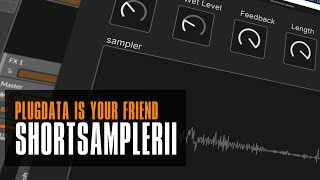
Sep 15, 2023 Tutorial
In this video, I continued working on my sampler or looping station patch inside Plug Data. I made some improvements to make it more dynamic and turned it into a plugin-like interface. First, I addressed the issue of fixed numbers by using the sample rate module to get the current sample rate of the DAW. This allows the patch to adapt to different sample rates. I also used a dynamic variable for the buffer size by using the send and resize commands. This way, the buffer size can be changed based on the desired length of audio to be recorded. Next, I made the fade out delay time dynamic by subtracting 200 milliseconds from the buffer length. I also added a feedback feature to create a decaying audio signal.
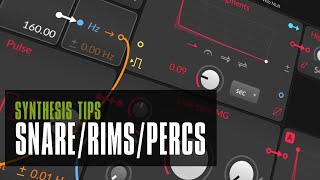
Sep 11, 2023 Tutorial
In this video, I'm going to show you my setup for synthesizing snare and rimshot sounds using the pulley grid in my DAW. I use the pulse oscillator because it already has a lot of overtones, so I don't need to use as much post-effects distortion. I set the frequency to around 150-160 Hz for a deep snare sound. I use an AD envelope to trigger the sound and apply an EQ5 in the PostFX to analyze and shape the signal. By adjusting the sync, I can create two partials or amplify the second harmonic. I add a Moog low pass filter and use the shape output of the AD envelope for frequency modulation. This creates a nice snare sound. I also add some noise using a noise burst and a mixer. I shape the noise with segments and use a high pass filter. I then apply a hard clip and use dither and diffusion for added spice. The EQ is crucial for shaping the sound, and by cutting below 1k and boosting around 1k, I can create a rimshot sound. I can also tweak the settings to create deep snare sounds. I can detune the oscillator slightly for a wider sound. Overall, there are many possibilities for customization using these knobs and EQs. I can also add pitch modulation if desired. Finally, I can apply a convolution effect to add roominess to the sound. This setup is great for drum and bass, dubstep, and other genres, providing a clean and focused sound.
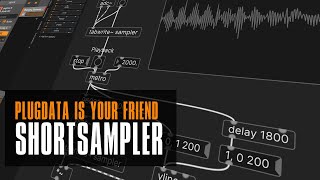
Sep 08, 2023 Tutorial
In this video, I demonstrate how to use Pure Data as a plugin inside Bitwig. I explain the process of recording and sampling audio into an array, manipulating the playback speed, and adding fade-in and fade-out effects. By understanding these techniques, viewers can explore creating their own plugins or prototype their own audio projects.

Sep 07, 2023 Webtool
Welcome to Interactive Piano Chords! This web app allows you to explore various piano chords, visualize them on a virtual keyboard, and even hear how they sound. Click on a chord from the list to highlight its notes on the keyboard and play its sound. You can also see how many notes each chord shares with the currently highlighted chord. Enjoy your musical journey!
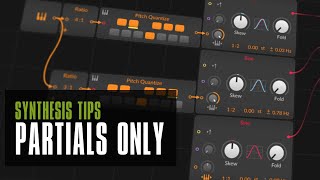
Sep 04, 2023 Tutorial
In this video, I show how to create interesting sounds and soundscapes using tones and wavetables. I primarily use Bitwig Studio and Serum, but just the wavetable editor in Serum. I demonstrate how to manipulate the wavetable by drawing in different wave shapes and randomizing certain partials. I then export the wavetable and import it into Bitwig Studio's wavetable oscillator. Using the wavetable oscillator, I create a motif by randomizing pitch steps and applying pressure and timbre modulation. I also incorporate effects like convolution reverb and delay to enhance the sound. I then explore using the polygrid to create more complex sounds by drawing in sign partials and modulating them over time. Finally, I use the polygrid to create a pad sound by combining sign partials, applying ADSR envelopes and filters, and adding effects like delay and chorus.
previous | next









